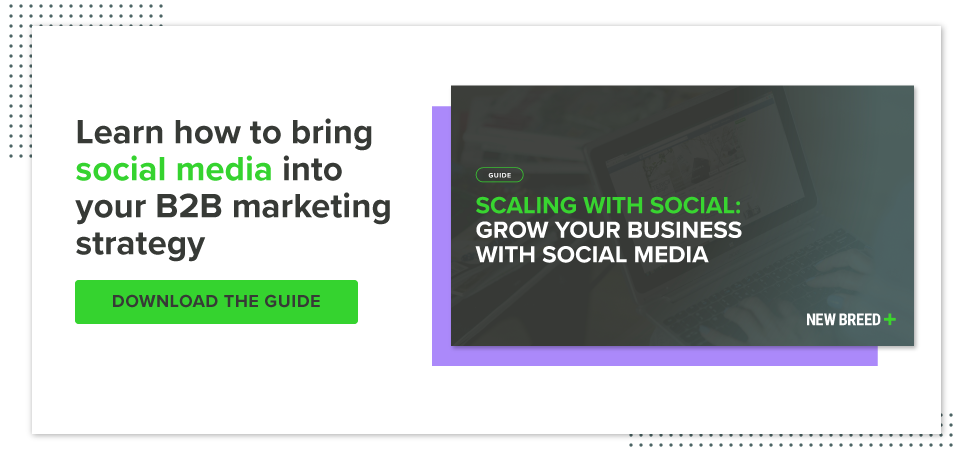3 Ways B2B Organizations Can Use Social Media for Lead Nurturing
There’s little question that social media is a critical part of the modern marketing mix.
Since most of the major social platforms have gone public, they have become an extremely effective place for brands to advertise and connect with customers in ways that were never before possible. But generally, social media is thought to be a channel that is primarily used for B2C connections.
After all, B2B buyers aren’t using Facebook and Instagram to learn about businesses and conduct product research, right?
Wrong. B2B companies should absolutely be capitalizing on social media if they want to connect with their audience and generate more leads. 75% of B2B buyers use social media to support their purchasing decisions. Moreover, salespeople that utilized social media drew in 38% more leads than when just using traditional methods.
However, just because social media is clearly influential doesn’t mean that you can expect loads of leads to funnel in after creating a few accounts for your business.
B2B organizations should also understand that their strategies will look different than the traditional B2C approach — as their audiences have different content preferences and follow a more complex buyer’s journey.
So, what is the best way for B2B companies to use social media? Let’s discuss.
1. Use Social Platforms to Promote Blog Content
As B2B buyers travel down the sales funnel, they often rely on informative content to move them from one phase to the next. B2B consumers are far more interested in comparing products and finding proof of ROI from these types of investments than the average B2C consumer would be.
According to a report from Demand Gen, 71% of buyers actively seek out a brand’s content during the purchasing process, with the majority interacting with up to five pieces of content before reaching out to the sales department. This study also found that the content preferences will vary depending on the person’s position in the buyer’s journey.
For instance, in the early stages, buyers tend to prefer infographics and podcasts, while late-stage buyers were more interested in non-traditional content like webinars and case studies.
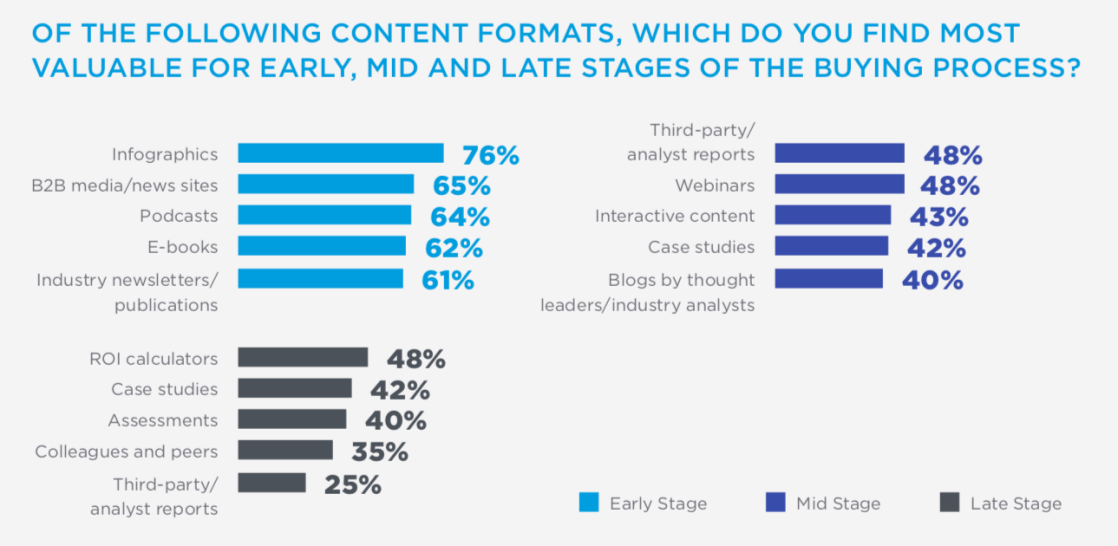
In order to connect your buyers with the information they are seeking, it is best to use your business’s social media presence to promote supportive content.
B2B buyers are certainly checking out social media channels like Facebook, Twitter and Instagram to learn about brands and discover answers to their questions. So, these are the perfect places to promote the kind of content that will be influential on their decisions.
Take the Trustpilot Facebook page as an example here. They share a mix of content on their profile, but they will often use it to promote new blog posts or useful content pieces that can answer questions that a buyer in the consideration phase may have.
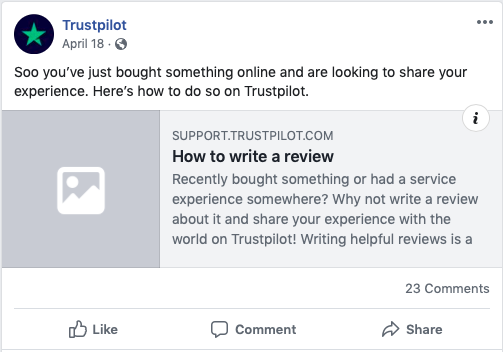
These links send the person directly to Trustpilot’s blog on their website, driving in social media leads that can be later nurtured by the sales department.
2. Participate in Groups to Share Advice and Information
Establishing your brand as a thought leader is very important in the B2B realm.
Since B2B buyers tend to be more informed and want to partner with businesses that are leaders in the industry, you will want to portray your brand’s knowledge wherever possible — including social media.
More and more customers are using social media to connect with brands directly by posing questions or comments and engaging in back-and-forth conversations. In order to actively generate leads, your marketing team should be utilizing social listening technology in order to spot opportunities for engagement. You need to be on the ball when B2B consumers either mention your brand directly or post about something related to your specific industry.
One good way to get the conversation going and prove your business’s own expertise is to engage with social media groups and forums. Facebook and LinkedIn are two of the best platforms for this type of engagement because both host specialized groups where people can ask questions and engage in discussions.
Your team should be actively joining groups and searching out ways to answer people’s questions that are posted. For example, you can see how several B2B leaders jumped in on this Facebook Group question related to email marketing.
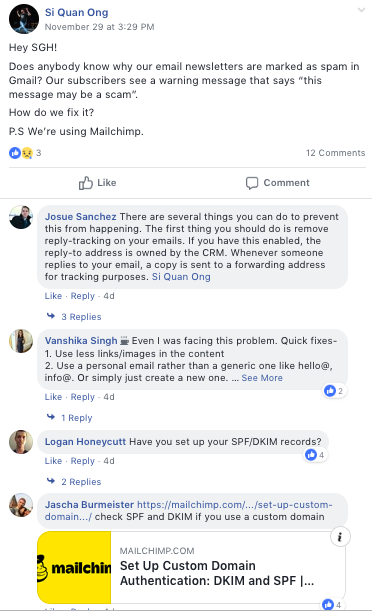
This was the perfect opportunity for marketing leaders to share their expertise by offering valid solutions and support.
3. Encourage Employee Advocacy
In the name of expanding your audience reach and adding a strong sense of authenticity, you are wise to find ways to encourage your employees to advocate for your brand and generate leads through their social media pages.
According to a report on employee advocacy from Hinge Marketing, businesses that encouraged their employees to utilize social media for lead generation saw incredible results. 79% reported greater brand visibility, 65% saw a boost in brand recognition and 45% increased their inbound web traffic.
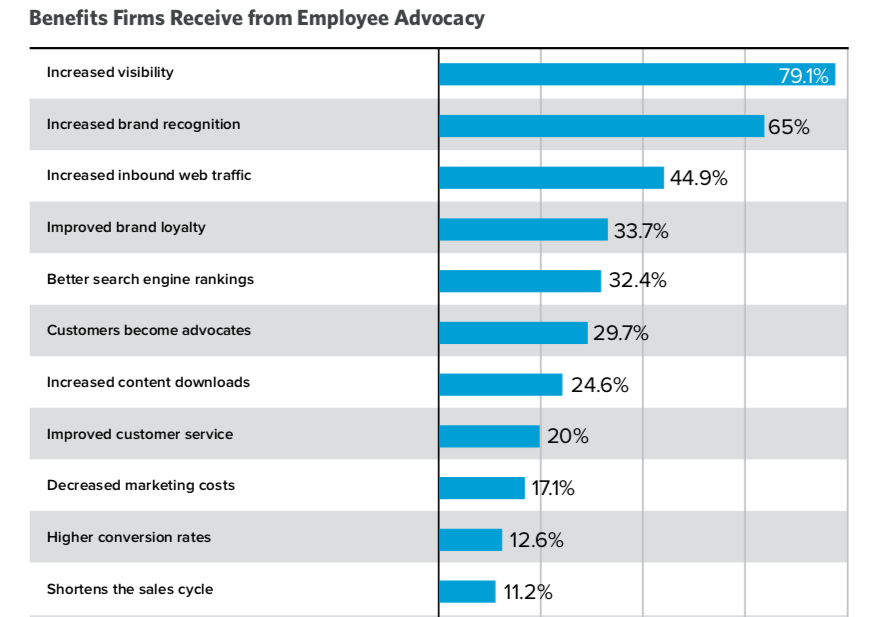
What is even more interesting is the fact that the employees themselves saw benefits by using their social media channels to promote their company. 69% stated that advocacy actually helped their career thanks to positive personal branding. 50% were able to successfully develop new business connections and leads.
There are several reasons why employee advocacy is so effective, but the bottom line is that people simply trust people more than brands. Their content also seems more genuine than traditional advertising, so it tends to generate more meaningful engagement.
The IT consulting firm Bluewolf does a great job of encouraging their workers to share their experiences through social channels and foster strong personal brands. Bluewolf uses EGC (employee-generated content) during live events, such as business conferences or employer meetings to give a behind-the-scenes look to their followers.
This practice does a lot to create a humanized brand element and promote the simple fact that there are everyday people working behind the scenes.
The Takeaway
B2B social media is a whole different ballgame from B2C.
Your company needs to have a different approach in order to generate and nurture leads with these channels. As always, it is most important that your marketing team understands your audience and knows how to best connect with them through social content.
Jaykishan Panchal
Jaykishan Panchal is an SEO & Content Marketing Manager at E2M Solutions Inc. Implementing cutting edge SEO strategies to help businesses strengthen their online presence is his forte. Apart from helping small and big businesses, he loves to jot down valuable resources for Entrepreneurs, Start Ups, Technology Geeks...



